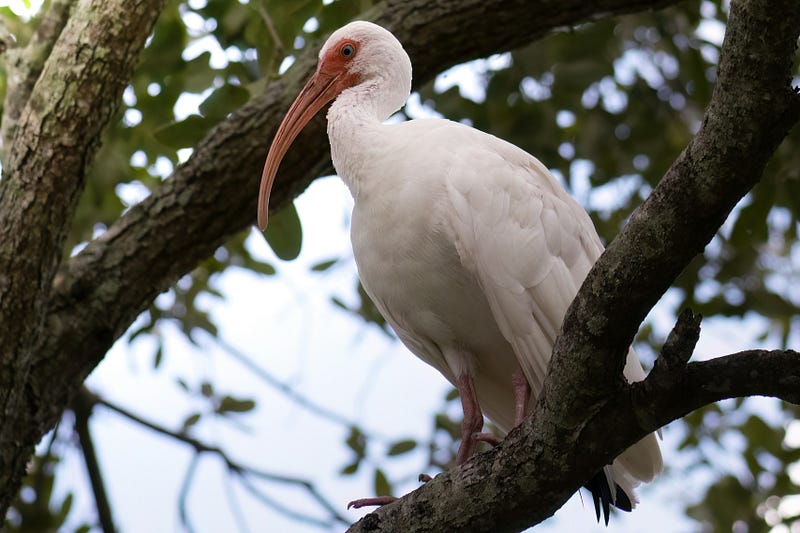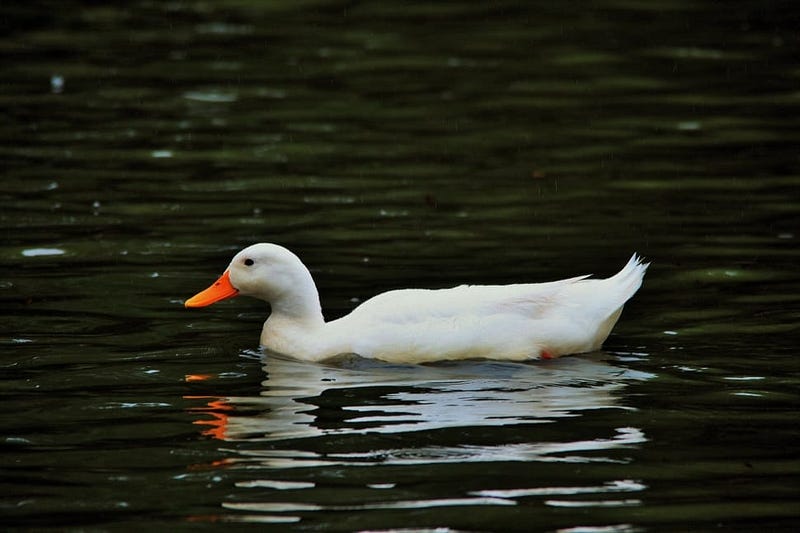Title: Exploring the Fascinating World of Ibis Birds
Written on
Chapter 1: Understanding Ibis Birds
What exactly is an Ibis? These birds have a penchant for snails and various small creatures.

I’ve never encountered wild waterfowl that often visit lawns. Growing up in Georgia, if you wanted to see a simple duck, you’d typically head to a cemetery or a zoo and feed them, mostly white ones at that. I have fond memories of feeding one duck oatmeal each morning with my younger sister. However, one day, that duck simply vanished, and no one ever mentioned what happened. I often wondered about its fate, assuming it became someone’s dinner as the years went by. I was just five years old, and my sister was four.
Our family had a friend named Mr. Jinks, and after relentless questioning, we were told our duck had gone to live on his farm. Who knows what the truth really was?

These Ibis birds visit my lawn each morning, searching for snails and other small snacks. With their long bills, they adeptly dig into the ground and can catch anything tossed their way. The young ones are particularly adorable, sporting darker feathers that flutter as they walk. A group of about fifteen of them forages on my lawn, probing the earth for food, including snails and lizards. Given that my area used to be a marsh, it provides an excellent hunting ground for them.
Their range extends from the coasts of North and South Carolina to Texas and down to South America, with a significant presence in Florida. For those in the north, they are roughly the same size as a Mallard.
Ibises thrive in a variety of habitats, including salt, brackish, and fresh marshes, rice fields, and mangroves. They often forage in shallow waters and have been known to fly to fresh water even in coastal areas. Common foraging sites include marshes, mudflats, flooded fields, and grassy areas. They typically build nests in mangroves, swamps, or dense thickets.
When searching for food, they walk slowly through shallow waters, using their bills to probe the bottom. They also forage on land, especially in muddy areas or short grass, relying on touch and sight to find their meals. Interestingly, White Ibises may steal food from one another and can also have their food taken by larger birds.
Despite their resilience, the population of Ibises in Florida has significantly declined from historical levels in recent decades, although their range has expanded somewhat in the U.S. due to a northward movement along the Atlantic Coast. They remain vulnerable to the loss of vital feeding and nesting habitats.
For more about their behavior and habitats, check out this video:
Chapter 2: The Wildlife of Florida
Florida is home to a diverse array of wildlife, and I’m continually amazed by the abundance of Muscovy ducks and iguanas in my neighborhood. Unfortunately, they are often viewed as invasive species and face threats to their populations.
I was cultivating sweet peppers on my patio, and was thrilled to see them thriving. However, the next day, all that remained were the stems! Upon further investigation, I discovered that an iguana was the culprit, caught mid-bite on the plants. I decided against planting certain things, realizing that iguanas have a fondness for green, leafy vegetables. I admire iguanas for their dragon-like appearance, so I chose not to harm it.
I try to avoid feeding the ducks to prevent them from gathering in large numbers. They communicate with each other and quickly learn where to find food. I used to live near a canal, and I can attest to their intelligence.
Jo Ann Harris is an author, parent, and devoted book lover. A self-taught individual, she has lived and worked in Atlanta, Georgia for sixty years, writing articles, advice pieces, and poetry. She was published in Woman’s World magazine in October 2017, and continues to share her insights and experiences.
For further insights into where Ibises reside, watch this video: